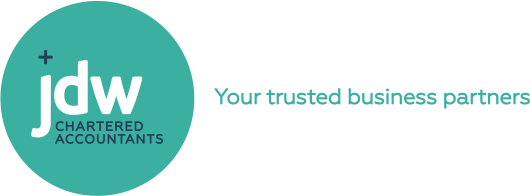Applying for Covid-19 Resurgence Support Payment RSP
Applying for the Covid-19 Resurgence Support Payment (RSP)
The NZ Government has made the Resurgence Support Payment (RSP) available to businesses and charities which have a 30% or more drop in revenue as a result of an increase in Covid-19 Alert Levels to Level 2 or higher. There are several differences from previous wage subsidies, especially regarding GST, commonly owned companies and pre-revenue businesses. Applications opened on 23 February 2021 for the 15 February level change, and are available throughout NZ, not just Auckland.
In the article below, we have used the term "business" but it applies equally to pre-revenue businesses, charities, incorporated societies, non-government organisation and some state organisations.
IRD Administers the RSP not MSD
The Resurgence Support Payment is administered by IRD, not MSD. Applications can be made via MyIR, so you will need to have MyIR access to your business IRD number. This should make it easier to apply as you won't need to rekey employee IRD numbers; you will only need to advise which employees are full time vs part time.

RSP Benefits Small and Medium Business
Lower FTE Payment
The RSP gives eligible businesses $1,500 per business plus $400 per FTE up to 50 full time equivalent (FTE) employees, up to a $21,500 maximum. The limit of 50 FTE makes clear that the RSP is aimed mainly at supporting small and medium businesses.
A full-time equivalent worker is an employee who regularly works for 20 or more hours a week. A part-time equivalent worker is an employee who regularly works for less than 20 hours, and is treated as 60% of a full-time equivalent worker for the calculation of FTE.
Sole traders with no employees can receive up to $1,900.
The payment is capped for low revenue businesses at 4x the revenue drop. So if the revenue drop was $500, the RSP payment would be limited to $2,000 even if they had 2 or more FTEs.
Use of Funds Received
The payment must be used to pay business expenses such as wages and fixed costs.
GST Applies
GST registered businesses must include the RSP as revenue in their GST return. This is consistent with other Government grants. A special legislative amendment was passed for the previous wage subsidies, but that hasn't happened in this case. One of the distinctions is that the RSP can also be used towards fixed costs.
If the RSP has been applied against fixed costs, then businesses can claim the GST input tax deduction on the expenses paid.
Income Tax exempt
The RSP is exempt income for income tax. On the flip side, the wages and fixed costs that are covered by the RSP are non-deductible for income tax. Net tax effect is neutral.
Eligibility for RSP
Time in Business Clarified
Businesses must have been in operation for 6 months before 15 February 2021. Applicants (including sole traders and trustees) must be 18 or over. Business must have been viable immediately prior to the start of the increase in Alert Levels.
Revenue Drop of 30% not 40%
The revenue drop of 30% will follow the taxpayers method of income recognition – cash sales for restaurants, activities which would lead to invoices for others. You cannot delay invoicing to make a business qualify for the RSP. Passive income such as rent, interest and dividends are excluded from the revenue calculation.
7-Day Period not 14-Day
Period is any continuous 7-day period within the increased Alert level period. The Government has the ability to open the RSP application process multiple times.
Comparison Periods
The comparison period is a continuous 7-day period in the past 6 weeks. If you operate a seasonal business, then you can use a similar week in the cycle in the past year. For instance, an events business recognises the income from stall holders and ticket sales when the event takes place. If the event is cancelled due to the increase in Alert Levels, the previous 6 weeks is not a good indicator of a revenue drop, so we have to use other comparisons.
Common Ownership
Companies with common ownership will only be able to apply as a group. Common ownership is not defined in the RSP legislation, but we believe it will be the same as for the Small Business Cashflow Loan. A commonly owned group for the Small Business Cashflow Loan is considered to be one where each business has the same combination owners, even of the proportion of ownership is different.
A commonly owned group may occur if there is a dominating shareholder or group of shareholders, and the businesses operate together as one. If there is a complex ownership structure where overall control is centralised and the businesses are one enterprise in substance. An example may be a retail business which has separate company for online, brick-and-mortar store, wholesale, but all the management and logistics is in one place.
Capital Raising Entities can apply
Pre-revenue businesses can apply too, if capital raising ability has been affected by a more than 30% reduction. A pre-revenue business or organisation is one that has taken active steps towards being market-ready but has not yet begun trading. They will need to keep records of how their ability to raise capital or begin trading was affected by the raised alert level.
What should I do now?
Make sure that you have a MyIR login which allows you to access your business. Advise IRD of the business bank account for the RSP.
Keep a copy of all calculations, including records of sales data showing dates and dollar amounts, employee records showing average hours worked.
Contact us if you think you are eligible for the RSP. We are happy to assist with calculations and applications on your behalf. We have access to MyIR for all of our tax clients, so this can simplify matters for you if you don't have MyIR access yet.
Read more here:
- Serena Irving
Download a PDF copy here or contact the author
The information and examples given in this article are general in nature and are not personal investment, financial or tax advice. We recommend that you contact the author or another professional advisor for advice that is specific to your needs. Serena Irving is a director in JDW Chartered Accountants Limited, Ellerslie, Auckland. JDW is a professional team of qualified accountants, auditors, business consultants, tax advisors, trust and business valuation specialists.




